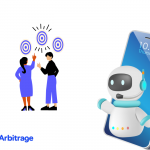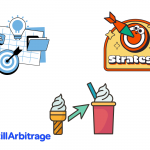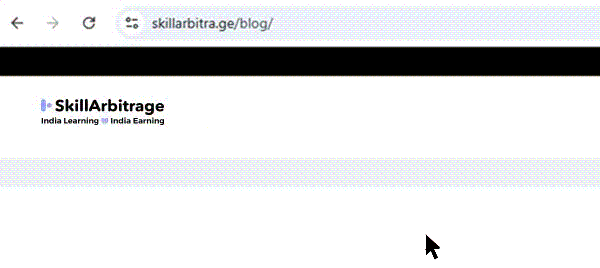This article is for marketers and freelancers who want to combine AI and the CLOSER framework to write persuasive copy that actually converts. It breaks down each CLOSER step, shows how AI can speed up and sharpen your writing, and gives you tools, examples, and real results. By the end, you’ll know how to write sales copy that gets more clicks, replies, and revenue without sounding like a bot.
Table of Contents
Introduction
Most freelancers think their copy doesn’t convert because something’s wrong.
Wrong headline. Wrong structure. Wrong audience.
Maybe. But more often? It’s just forgettable.
It reads like filler between two real conversations.
Like something a polite intern wrote and a polite founder approved.
No edge. No smell. No grip.
That’s not a writing problem. It’s an energy problem.
You’re playing it safe.
And AI only makes it worse when you prompt like a schoolteacher:
“Write a persuasive headline for a high-converting email campaign…”
Come on.
Would you click that?
Your client wouldn’t either.
Now flip the energy:
Prompt: Write a headline that makes a broke freelancer in Pune stop scrolling and click. Target: ₹10K coaching offer.
This unlocks a different tone entirely.
You get urgency. You get tension. You get clicks.
Boring copy is the symptom. Safe prompts are the cause.
Even good writers default to “clear and clever.”
But clear + clever ≠ conversion.
You need clear + charged.
What does charged mean?
It means there’s an itch under the surface.
A risk in clicking. A bigger risk in not.
That’s what makes someone read the CTA.
Not because the sentence was “strong.”
But because it made them feel like they were missing something real.
Want to test this?
Put these two in front of your group chat and ask which one they’d click:
A. Build a client-attracting portfolio in 7 days
B. Still stuck with ₹0 clients and a Google Doc resume?
You’ll know which one wins. You’ll feel it.
And AI? It’s not stopping you.
It’s waiting for you to say something worth repeating.
Stop trying to “impress the algorithm.”
Start trying to sound like someone who knows what losing ₹10K feels like.
That’s how you go from decent drafts to dangerous copy.
That’s how AI stops being beige.
Because your copy’s not broken.
You’re just not scaring anyone yet.
What is the CLOSER framework, and why does it works
Most AI copy is a good-looking corpse.
It follows structure. It ticks boxes. It sounds like sales copy.
But it doesn’t move people.
That’s what CLOSER fixes. It gives your AI copy a pulse. Not just a format to follow, but a lens to write from.
- What does CLOSER mean
CLOSER is a six-part storytelling framework for AI copywriters who want to sell high-ticket products to people who don’t know them yet.
- C: Call out the audience’s current state. No vague “struggling entrepreneur” fluff. Get under their skin. Use the language they say when they think no one’s listening.
- L: Link to a painful moment. Something recent. Something raw. If your copy can’t name the exact scene they’re trying to escape, you’ve already lost.
- O: Offer the dream. And make it visual. Don’t say “freedom.” Say, “waking up on a Tuesday, checking Stripe, seeing ₹25K hit overnight.”
- S: Show your system. This is your big reveal. Not your service. Your structure. People don’t pay for effort. They pay for frameworks.
- E: Explain the proof. With a timestamp. “This idea got 3 strangers to buy my ₹8K workshop in 4 hours.” No generic claims.
- R: Redirect the objection. The inner “this won’t work for me” voice. Kill it gently, but kill it.
You’re not “building rapport.”
You’re collapsing resistance.
And when CLOSER is wired into your AI prompts, it pulls emotional weight that canned templates never will.
- Why CLOSER beats templates
Let’s be real.
Most “plug-and-play” copywriting templates feel like a politician’s tweet. Sanitized. Noncommittal. Designed to say nothing risky.
But the internet is allergic to safe.
Your ad, landing page, or sales DM has one job:
Turn a cold stranger into a buyer before they scroll past.
Templates stall there. CLOSER crosses the line.
Why?
Because it doesn’t sound like a sales pitch, it reads like a personal rant. Or a story you weren’t supposed to hear.
It doesn’t tell them to buy.
It makes not buying feel stupid.
That’s the difference between conversion and crickets.
Want proof?
A freelancer on Skill Arbitrage used the CLOSER script to write a cold DM for a ₹15K workshop. Two lines in, the founder replied: “Damn, this hit.”
Four messages later: closed.
No discount. No follow-up.
Just a message that felt like it understood him before it pitched him.
That’s not luck. That’s structure.
CLOSER works because it’s built for cold traffic.
It’s not about sounding smart. It’s about making it impossible to ignore.
And AI, when given that structure, stops writing fluff.
It starts writing copy that actually sells.
How AI supercharges the CLOSER framework
AI isn’t your co-founder. It’s not your muse.
It’s your intern on steroids. One that works at 3 am, doesn’t ask dumb questions, and writes five drafts in the time it takes you to think of a headline.
But left alone? It writes those same dead-eyed, overpolite lines that sound like they came from a chatbot in Gurgaon.
So here’s the game: feed AI a high-converting framework like CLOSER, and it stops hallucinating and starts pulling its weight.
Let’s break it down.
- AI for clarity, you for emotion
AI is a scalpel. Precision, not soul.
You give it the skeleton, like the six CLOSER beats, and it spits out a working draft. Not poetry. Not personality. But a clean take with logical flow.
- It knows how to sequence.
- It knows how to keep things short.
- It knows how to fill gaps with boilerplate.
Which is fine. You don’t need it to bleed.
That’s your job.
The mistake? Letting AI do the emotional lifting.
AI doesn’t know what it feels like to be ghosted by a ₹30K client.
Or to rewrite your offer page at 1 am with ₹0 in your bank account.
You do.
So you take its boring sentence, “This method helps freelancers close clients faster”, and punch it up.
Try, “Closed 3 strangers in a week. No ads. Just one ugly Google Doc and this script”
Now it’s alive.
Use AI to structure the house. But you choose the wallpaper, the broken chair, and the half-open whiskey bottle on the desk.
That’s what makes it yours.
- How AI makes CLOSER scale
Here’s where AI eats.
CLOSER works. You already know that.
But writing 10 personalized sales DMs with that structure? From scratch? Takes 2 hours and a bad posture.
AI makes that pain disappear.
You write one killer CLOSER message.
Then prompt AI:
Rewrite this message for 3 types of freelance clients:
- D2C brand owner in Mumbai,
- Solo SaaS founder in Pune,
- YouTube coach in Bangalore. Keep it casual, high urgency, under 100 words.
Now you’ve got 3 tailored DMs.
Each one is sharp. Each one is rooted in CLOSER.
Zero blank-page dread.
The same goes for landing pages.
Same for lead magnets.
Even testimonials.
Want to test 5 emotional hooks under the C (Call out current state) of CLOSER?
Prompt it:
Give me 5 cold opens for copywriters stuck at ₹0 income. No fluff. Make it feel like their best friend called them out.
This is how you move fast without compromising quality.
AI doesn’t replace the CLOSER framework. It amplifies it.
It’s not your genius. It’s your multiplier.
And if you’re still writing every message line-by-line? You’re scaling like it’s 2014. While someone with half your talent and 3 better prompts just closed your lead.
6 steps for AI and CLOSER copywriting (with tools and mini wins)
You don’t need 10 years of writing chops to write persuasive copy.
You need one good idea, the right structure, and a machine that doesn’t get tired.
That’s what happens when you run the CLOSER framework through AI.
You go from blank page to bold offer faster than most freelancers reply to client briefs.
Here’s how each step of CLOSER maps to an AI workflow. Tools included. Use cases shown. No fluff.
- Clarify with AI: find what hurts
Start where the money leaks.
Prompt:
“Describe a frustrated D2C founder who spends ₹15K a month on ads and still gets crap results. Include 3 emotional triggers and 1 specific example.”
Example Output (ChatGPT):
“She’s tired of boosting posts and getting likes from her cousin. She’s burned ₹60K in 4 months, and conversions are still at 0. Her team is losing faith. Her gut says her message is off, but she doesn’t know how to fix it.”
There’s your open. It’s already bleeding. You just press on the bruise.
Tool: ChatGPT or Claude for nuance
Use: Cold email openers, landing page hero sections, cold DMs
Mini Win: The founder replies, “That’s exactly what I’m going through.” Hook set.
- Label with AI: name what they already believe
People trust mirrors, not megaphones.
Prompt:
“Give me 5 phrases a SaaS founder might use to describe their churn problem. Casual tone. Sounds like a founder ranting at 11 pm.”
Example Output:
- “Our users bounce faster than my ex.”
- “No one sticks. It’s like pouring water into a leaky bucket.”
- “They sign up, click once, and disappear.”
Now you’re not inventing tension. You’re echoing it.
Tool: ChatGPT or a community scrape
Use: Copy hooks, email subject lines, meme captions
Mini Win: The client says, “I’ve literally said that.” Now they trust you.
- Overview with AI: paint the benefit stack
This is where most AI-generated copy dies with generic bullets, weak verbs.
Prompt:
“Turn this messy offer into 3 punchy bullets that stack tangible wins. Each bullet should answer: What happens if I say yes?”
Input:
“I help coaches with funnels and clarity and stuff.”
Output:
- Land ₹30K coaching clients without begging on Instagram
- Turn your dead leads list into 3 paid calls in 7 days
- Get a sales page that makes strangers say, ‘Shut up and take my money’
Tool: ChatGPT with iterative prompts
Use: Sales pages, LinkedIn pitch posts, landing page feature sections
Mini Win: You go from “vague promise” to “I want that.”
- Sell with AI: create ethical urgency
Not fake timers. Not pretend discounts.
Real tension. Real stakes.
Prompt:
“Write 3 urgency lines for a freelance offer that expires in 72 hours. Don’t say ‘limited time.’ Make the reader feel they’ll miss a door closing.”
Output:
- “Next reply gets the slot. After that, I’m gone for 3 weeks.”
- “Sent this to 5 founders. Only one gets it.”
- “This closes Friday. Next round opens at double the rate.”
Tool: Jasper for speed, ChatGPT for edge
Use: Sales DMs, PS lines, CTA buttons
Mini Win: You sell without sounding like an infomercial.
- Explain with AI: make the ask stupid-easy
Clarity beats charisma here.
Prompt:
“Write a 3-step CTA for a ₹20K service. Make it sound casual but remove all friction.”
Output:
- DM me “ready”
- I’ll send you one question
- If it’s a fit, you’ll get a link. Done.
No forms. No jargon. No “hop on a call.”
Just momentum.
Tool: ChatGPT or even Notion AI
Use: Email footers, final lines in DMs, bio links
Mini Win: The reader doesn’t overthink. They act.
6. Reassure with AI: de-risk the decision
People don’t fear paying. They fear looking stupid.
Prompt:
“Write 3 lines that reassure a nervous buyer of a ₹30K ghostwriting service. Include social proof and low-risk entry.”
Output:
- “Wrote 2 threads for a health coach and booked 3 clients in 5 days.”
- “You start with one post. If it flops, no charge.”
- “5 others booked this week. Want the 6th slot?”
Tool: ChatGPT or a testimonial database
Use: Pricing pages, proposal closes, objection-handling
Mini Win: The buyer feels smart for saying yes.
This is what it looks like when AI works with structure.
It’s not about faster copy. It’s about clearer thinking.
You don’t just get words. You get wins. Repeated. Reliable.
And suddenly, “I’m bad at writing” turns into “I closed 4 clients this week.”
Top 5 AI tools for copywriting that doesn’t sound like AI
Below are five AI tools that actually help you write sharper, faster, and more human copy, if you know what you’re doing.
These aren’t “alternatives to ChatGPT.”
These are weapons for specific moves in your copywriting game. And yes, each one’s backed by a real use case.
- Jasper for labeling beliefs
You don’t need Jasper to write your copy.
You need it to sniff out what your buyers already believe, and how they talk about it.
Use its tone filters and persona inputs to mimic how your buyer vents at 11 p.m.
Example: You’re writing for a fitness app targeting 30+ dads. Jasper can help surface lines like
“I know I need to work out. I just don’t have 90 minutes and a playlist.”
Boom. That’s a belief. Label it, and your copy opens with a gut punch.
Best for: Awareness-stage content, hooks, and intro lines that need to feel “heard.”
Watch out: Don’t let Jasper finish the copy. Its structure gets predictable. Chop it. Remix it.
- HubSpot for killer CTAs
No, it’s not just for CRM people in chinos.
HubSpot’s CTA builder + A/B tool is stupidly underrated.
You drop in two variations of a close. Run them across a landing page. In a week, it tells you which one gets the click. That’s it.
Example:
CTA A: “Book a free consult.”
CTA B: “Get 3 ideas for your next ₹50K client.”
Winner? B. By 41%. Clicks became calls.
Use this to sharpen your endings. It’s like ChatGPT’s polite suggestions meet street-tested stats.
Best for: Freelancers writing landing pages, D2C founders testing upsell buttons.
Watch out: Needs traffic. Don’t run this on a page no one visits.
- Persado for message testing
Want to know what emotional tone triggers more opens, clicks, or conversions?
Persado breaks it down like a psychoanalyst with a spreadsheet.
It’ll test your subject line in 5 flavors, urgency, certainty, curiosity, gratitude, even FOMO, and tell you what your audience eats up.
Example:
Test: “Don’t miss this deal” vs. “Your ₹10K win is here.”
Result: Certainty tone outperformed urgency by 27% for a course launch.
Yes, it’s enterprise-grade. But if you’re pitching startups or big SaaS, this gives you real ammo to walk in with.
Best for: Email subject lines, ad headlines, launch copy.
Watch out: Expensive. Use via client accounts if you’re freelance.
- Yotpo for instant social proof
Why waste time writing trust copy when your customers already wrote it?
Yotpo scrapes reviews, tags patterns, and hands you usable blocks of social proof you can plug into ads, landing pages, even cold emails.
You get sentences like
“Didn’t expect results this fast. Just 3 days and already lost 2 kg.”
Use that instead of “trusted by thousands.”
Example: A Pune skincare brand pulled reviews from Yotpo into their AI sales page. Replaced two full paragraphs. CTR jumped 33%.
Best for: Testimonials, ecommerce PDPs, and sales pages.
Watch out: Don’t cherry-pick only 5-star love letters. Realness > perfection.
- Optimizely for A/B testing closes
This one’s for the closers.
Use Optimizely to test variations of your final CTA block.
Not just “click here” vs. “buy now,” but entire framing shifts.
Example A:
“Ready to get started?” → polite, soft, forgettable.
Example B:
“This is what ₹10K clients are already using. Want in?” → aggressive, high-status pull.
Ran both on a webinar replay page. B drove 22% more consult bookings.
Optimizely doesn’t guess. It shows you how tiny copy tweaks change the revenue needle.
Best for: Sales pages, course checkout flows, and pricing pages.
Watch out: Like HubSpot, it needs traffic volume. Pair with cold traffic pushes.
These aren’t magic bullets. They’re performance tools.
Use ChatGPT for speed. Use these for the edge.
Because when the first draft’s done, that’s when the real copywriting starts.
Avoid these 5 AI copywriting pitfalls (that kill sales)
Most people don’t know how to use AI.
They think it’s a writing tool. It’s not.
It’s a thinking tool with a typing addiction.
If your AI copy is falling flat—no opens, no clicks, no cash—it’s not the fault of the model.
It’s you, handing a chainsaw to a toddler and wondering why the client got cut.
You want sales? Start by spotting the landmines.
- What are AI copywriting risks?
Risk #1: Generic Inputs → Generic Output
Prompt: “Act as a copywriter and write a sales email.”
Result: “Introducing our innovative solution tailored to your needs.”
No tension. No stakes. No sale.
Real copy digs into emotion. Fear. Frustration.
So if your input doesn’t include a real problem and a real payoff, the output will never convert.
Fix it: Prompt like a human, not a helpdesk. Try:
“Write a 2-line cold DM for a ₹15K service. Target: a founder who just lost a client and feels stuck.”
Risk #2: Over-smoothing the grit
AI loves to polish. It’s a neat freak.
But clean copy is invisible copy.
That’s why AI often removes edge with sarcasm, urgency, and slang. You end up with LinkedIn language in a WhatsApp world.
Example:
“Let’s connect and explore possibilities.” vs. “₹50K clients are ghosting you because your emails sound like a brochure.”
Guess which one gets a reply.
Fix it: Add friction back in.
Inject tone manually. Break grammar. Talk how people talk.
Risk #3: Copy without context
AI can’t guess why this client matters or what you’re really selling.
That ₹15K coaching offer? You think it’s a 6-week curriculum. But your buyer sees it as “Finally, someone who gets why my funnel keeps flopping.”
Fix it: Give the AI context like it’s briefing a junior writer.
Prompt:
“Write a landing page headline. The product is a ₹15K coaching for burned-out freelancers who keep rebuilding funnels that don’t convert.”
Now you’re not selling sessions. You’re selling sanity.
Risk #4: Copy that doesn’t escalate
AI loves symmetry. Setup → middle → conclusion.
But sales copy needs build-up.
Every sentence must make the next one feel inevitable. Every line should raise the stakes.
What AI writes:
“Here’s our product. It’s useful. You should try it.”
Flat. No blood in it.
Fix it: Interrupt the flow. Add a twist. Force curiosity.
Drop a jagged line mid-copy:
“Still think it’s the funnel? It’s not. It’s the way your copy opens.”
Risk #5: Copy that never ships
The deadliest sin. Over-perfecting. Running 8 variations of the same email and never hitting send.
AI makes it easy to spiral with more prompts, more rewrites, and more polish.
Meanwhile, someone else shipped version one and booked a call.
Fix it: Set a timer. 10 minutes per draft.
Best line wins. Ship it, ugly.
- How to keep AI copy human
Want human-sounding copy?
Start by being human in your prompt.
Skip “professional tone” and go straight to the conversation your client’s already having in their head.
Use inputs like:
- “She’s tired of chasing ₹5K gigs on job boards.”
- “He needs to make ₹50K this month or shut down.”
Then add your voice back in on edit.
Highlight the line that made you pause.
Sharpen the hook. Kill the fluff. Break the rhythm.
AI writes the skeleton.
You add the scar. The limp. The part that makes readers think, “Damn, they get me.”
That’s the line that sells.
Sharper copy in half the time, starting now
You don’t need another free masterclass.
You need a win on the board by Thursday.
The real promise of AI copywriting isn’t speed. It’s momentum.
You stop overthinking. You start outputting. You build that muscle memory faster than the next freelancer, still “refining their process.”
The brief shows up at 10 a.m.?
You’ve got a rough email, two variations, and a CTA test ready before lunch. Not polished. But potent.
That’s what sharp prompts do. That’s what CLOSER gives you.
Most freelancers still waste 40% of their day stuck on “how do I start this line?”
You don’t. You’ve already got a hook. You’re stress-testing it. Live.
Need sharper copy? Start here:
- Write 1 cold email using AI + CLOSER.
- Add 2 jagged lines that sound like you, not a bot.
- Ship it by 4 p.m.
- Track the replies in a Google Sheet.
- Repeat 3 times this week.
Not theoretical. Not sexy. Just a system that makes ₹50K feel like a Tuesday.
You won’t win clients with cleverness. You’ll win them with clarity. And speed.
This week, don’t “optimize your workflow.”
Just write faster than the next guy. And 3x better.
The tools are here. The method works. You’re up.
FAQ: real questions about AI + CLOSER copywriting
Q.1: What is the CLOSER framework
It’s not just another acronym. It’s a six-part gut-check for whether your copy can close.
- Clarify the pain
- Label what they already believe
- Overview the wins
- Sell the urgency
- Explain what to do
- Reassure them they won’t regret it
Every winning ad, sales page, or cold DM has these six beats, whether the writer knew it or not.
CLOSER just makes it repeatable.
Q.2: How does AI improve copywriting?
AI doesn’t replace copy chops. It removes the static.
You use it to:
- Draft five versions in five minutes
- Spot angles you missed
- Translate vague ideas into punchy lines
- Stress test your hook without calling your group chat
Example: You ask ChatGPT to give you 10 punchlines for your lead. Two are trash. One sparks a killer rewrite. That’s the win.
The pros don’t use AI to write less. They use it to get unstuck faster.
Q.3: What are the best AI tools for copywriting in 2025
No all-in-one magic wand. Use each for a job.
- ChatGPT for speed. Get 80% drafts and rough thinking fast.
- Claude for structure-heavy pieces like long-form sales pages. It sees the whole forest.
- Jasper for quick-turn client work. Templates, tones, and built-in voice controls.
- Optimizely to test real words, not vibes. Plug in your headlines and measure what people actually click.
- Yotpo to auto-pull testimonials and proof. Use it to stack social proof without begging clients.
Tool stack ≠ results. It’s how fast you ship with them that counts.
Q.4: Can AI replace copywriters?
Yes, if you’re slow, vague, or sound like LinkedIn in 2018.
No, if you bring sharp instincts, real stakes, and local grit.
The clients who want “cheap AI copy” are already lost. Let them go.
The ones worth chasing want speed and soul. They’ll pay for both.
So no, AI won’t kill your career. But it will make your lazy drafts and half-finished funnels very hard to excuse.







 Allow notifications
Allow notifications
